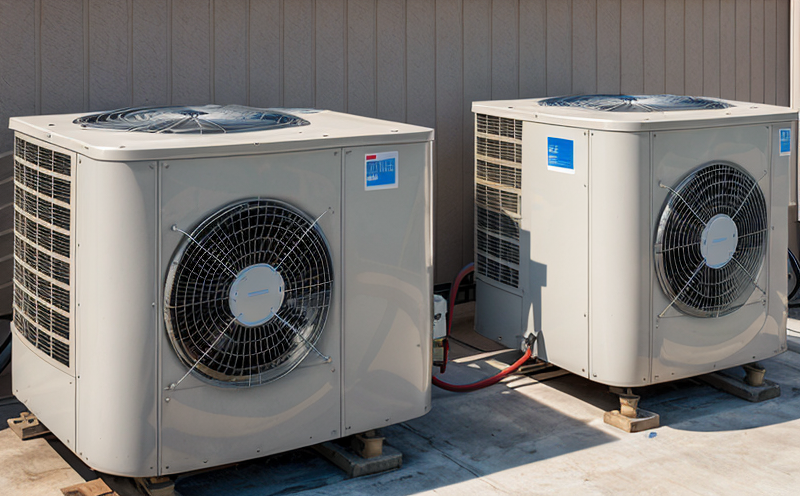ISO 16484-2 Building Automation and Control Systems Testing
The ISO 16484 series of standards is designed to provide guidelines for the assessment, design, installation, operation, and commissioning of building automation and control systems (BACS). Among these standards, ISO 16484-2 specifically focuses on testing and verification of BACS.
Building Automation and Control Systems are critical components in modern HVAC infrastructure. They manage various functions including heating, ventilation, air conditioning, lighting, security, fire safety, and more. The proper functioning of these systems is essential for the comfort, health, and safety of occupants while also ensuring energy efficiency.
ISO 16484-2 provides a framework to test BACS in accordance with international best practices. This ensures that all systems meet specific performance requirements and are reliable under various operating conditions. The standard covers not only the physical components but also the software, communication protocols, and integration between different subsystems.
The testing process involves multiple stages including initial setup verification, functional testing, interoperability checks, and continuous monitoring. Each stage is designed to ensure that the system performs as expected under all conditions. This rigorous approach helps in identifying any potential issues early on, thereby preventing costly downtime or performance degradation later in the lifecycle of the building.
One key aspect of ISO 16484-2 testing is its emphasis on real-world scenarios. The tests are conducted using actual equipment and environments that simulate typical usage conditions. This ensures that the results obtained are relevant and applicable to actual deployments. Another important feature of this standard is its flexibility, allowing for adjustments based on specific project requirements or local regulations.
ISO 16484-2 also addresses cybersecurity aspects, which have become increasingly crucial given recent threats targeting building systems. By incorporating security measures into the testing process, organizations can protect their investments against unauthorized access and potential disruptions. This comprehensive approach not only enhances system integrity but also aligns with broader industry trends towards more secure smart buildings.
In summary, ISO 16484-2 plays a vital role in ensuring that building automation systems are reliable, efficient, and safe. It provides a robust framework for testing these complex systems, helping organizations achieve their goals related to sustainability, operational excellence, and occupant well-being.
Applied Standards
- ISO 16484-2: Provides guidelines for testing building automation and control systems.
- IEC/EN 50173: Focuses on communication protocols used in BACS networks.
- ASTM E2196: Covers methodologies for evaluating the performance of HVAC systems.
The combination of these standards ensures a comprehensive approach to testing, addressing both hardware and software aspects of building automation systems. This integration allows for thorough validation that all components work harmoniously together, meeting stringent quality benchmarks set forth by each respective standard.
Benefits
- Enhanced Reliability: Ensures consistent performance of BACS across different operating conditions.
- Improved Efficiency: Identifies inefficiencies early, allowing for optimization efforts before deployment.
- Cybersecurity Protection: Incorporates security measures into the testing process to safeguard against unauthorized access and disruptions.
The implementation of ISO 16484-2 offers numerous advantages beyond just compliance with international standards. It promotes reliability, efficiency, and cybersecurity in building automation systems. By adhering strictly to this standard during the development phase, developers can ensure that their products meet high-quality benchmarks, leading to greater customer satisfaction.
Additionally, organizations following ISO 16484-2 benefit from reduced risks associated with system failures or unauthorized access due to thorough testing and validation processes. This results in increased trust among stakeholders regarding the quality of solutions provided by compliant providers.
Quality and Reliability Assurance
- Functional Testing: Verifies that each component performs its intended function correctly.
- Interoperability Checks: Ensures seamless communication between different subsystems within the BACS network.
The rigorous testing procedures outlined in ISO 16484-2 guarantee consistent performance and reliability of building automation systems. Functional testing ensures that every individual component operates correctly, while interoperability checks confirm that all parts communicate effectively with one another. Continuous monitoring throughout the lifecycle further reinforces these quality measures.
By adhering to strict protocols established by ISO 16484-2, organizations demonstrate their commitment to delivering high-quality products and services. This aligns them with industry leaders who prioritize excellence in building automation systems design and implementation.





